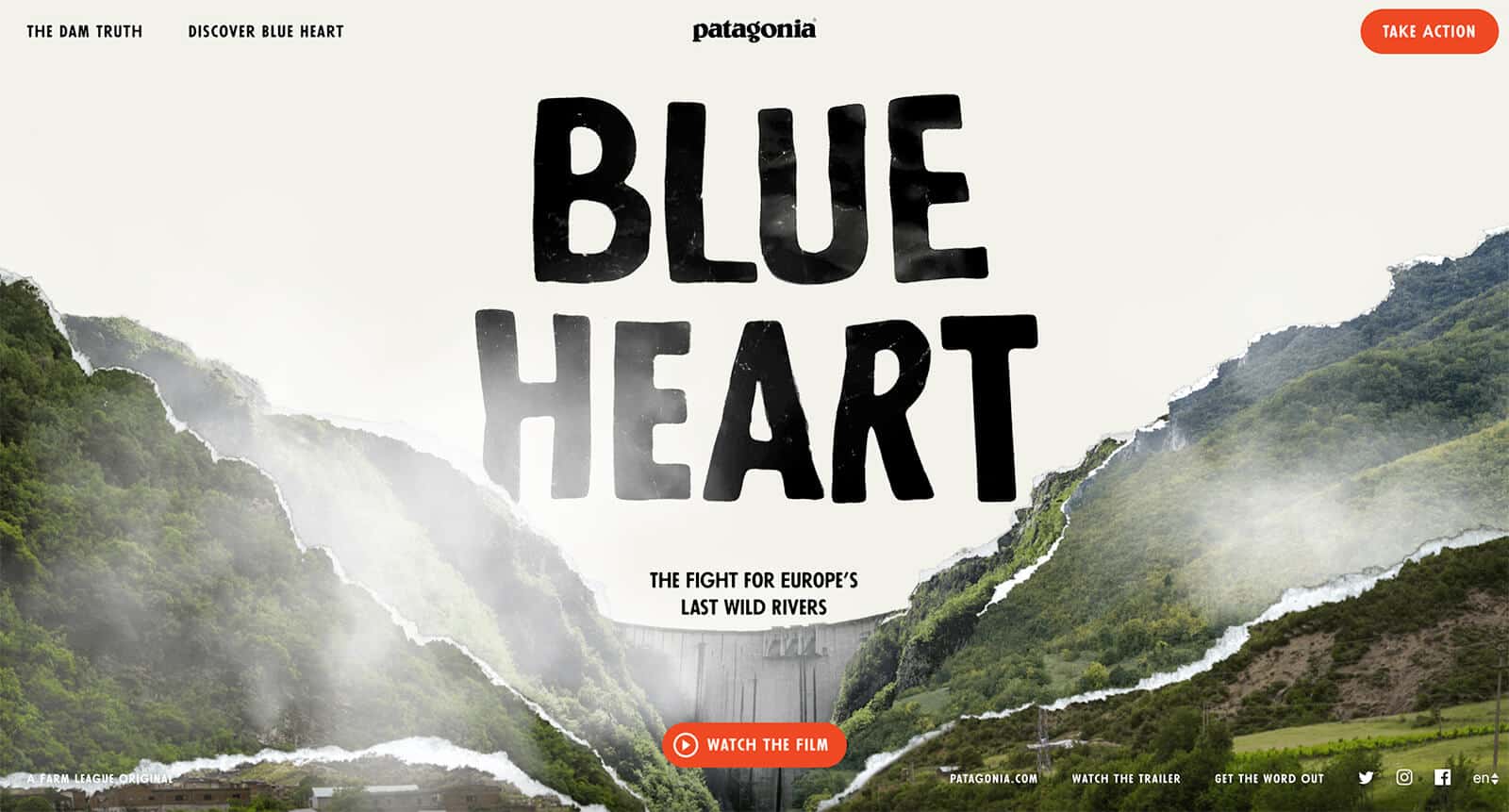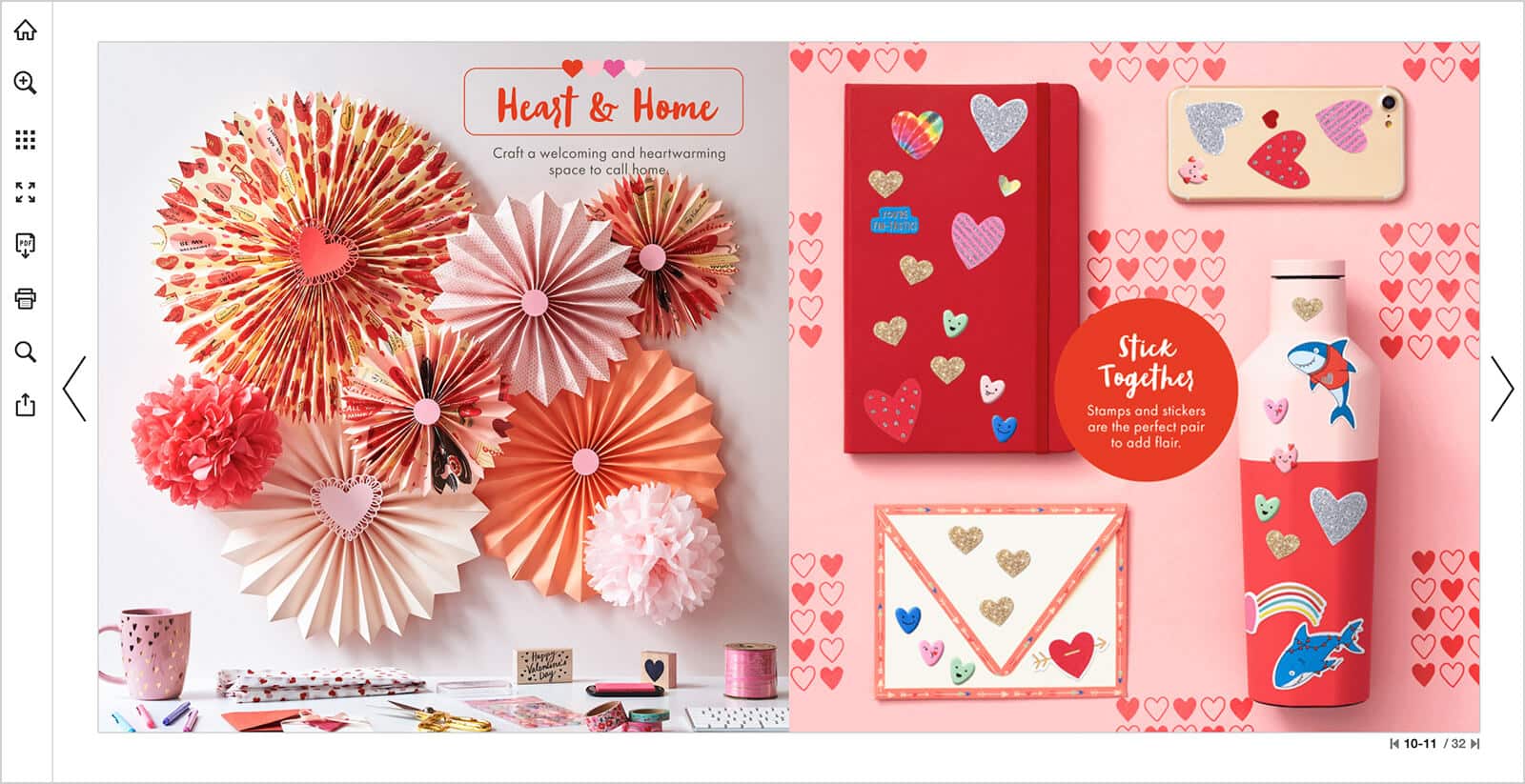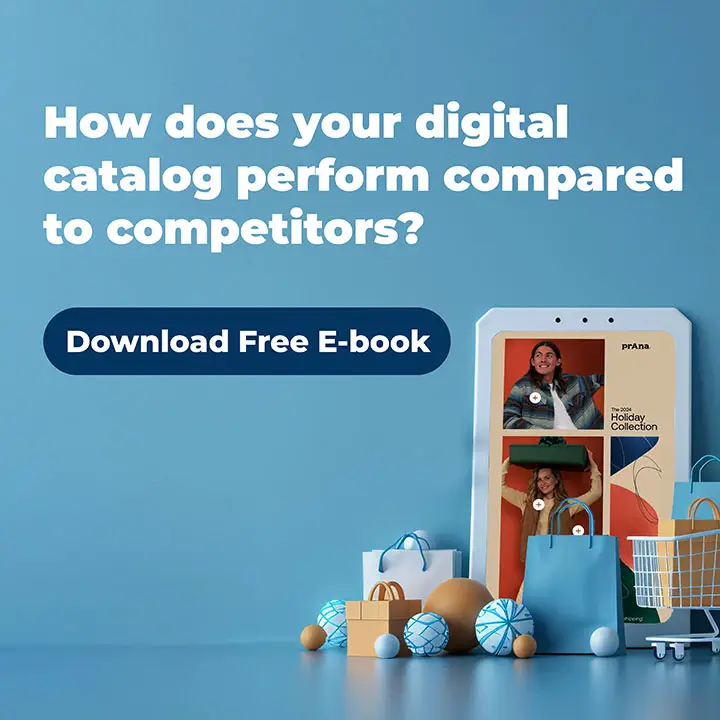Waves of shoppers are going online for their shopping needs, and retailers need to find a way to engage with these potential customers. With so many different ways of doing that—ranging from top-of-funnel advertising to SEO content marketing—what’s the right tool to pick at the right moment?
In this post, we’ll be looking at microsites and online catalogs and how they compare. Read on if you’re interested in finding out when the online catalog might be the right tool, or if a microsite is better for your purpose.
Before we dive into comparison details, let’s have a look at the microsite.
What’s a microsite?
Brands often create microsites (or minisites) to make it more convenient for visitors to learn about a specific campaign or event.
Instead of navigating through a brand’s website to find the page, viewers are directed to the microsite, where there are fewer opportunities to navigate away to unrelated content.

In this way, the microsite is essentially a campaign-tool; all focus and attention is on that one specific campaign or product.
For brands and retailers who are looking to engage shoppers online, a microsite could be a worthy suggestion for achieving this.
Ecommerce microsites
Looking at the commerce side of things, these microsites usually focus on product pages, images, videos, and a shopping cart—viewers are provided with a separate branded and curated experience to view products.
Complete with their own look and feel—eCommerce minisites often focus on one particular product line or vertical, and the content is focussed on those particular products only.
Typically, a retailer’s microsite will be on a completely separate domain or a subdomain of the brand’s main website.

Often, there will be a link somewhere in the footer of a store’s main website—directing them away from the eCommerce store.
Microsites focus on engaging shoppers in a novel and exciting way. Now let’s have a quick look at the online catalog.
What’s an online catalog?
We see the online catalog as a top-of-funnel, shoppable content experience. Usually aimed at helping shoppers discover your brand and the products you’ve got on offer.
Online catalogs can be one-on-one conversions of your paper catalog or become more advanced shopping experiences. Some might not even be based on existing paper collateral, but instead generated from the product feed of your online store.
Online-only catalogs can include any of your existing content, ranging from videos to animated gifs and other multimedia content.
The end goal for catalogs is always to provide a relaxed and curated content experience that allows shoppers to sit back and enjoy your brand with just a single click or swipe.

Things to consider when deciding between an online catalog and a microsite
In short, a microsite is a campaign tool that’s very effective at engaging shoppers around very specific topics, events, or products. Usually, excitement is key.
Online catalogs on the other hand provide readers a more relaxed experience to discover your brand and everything you’ve got to offer.
For the remainder of this article, we explore some important things to consider when choosing between a microsite or an online catalog.
Principally, these are:
- The amount of work required to set up and optimize a microsite vs. the catalog;
- The catalog discovery experience vs. a microsite campaign experience;
- The longevity of a catalog marketing channel vs. a microsite campaign;
- Configuring the SEO of your online catalog or microsite.
Online catalogs require less time, money, and work to set up
As microsites focus heavily on delivering an exciting experience, this often means a lot of work is required from a technical, artistical, creative and usability perspective. To conserve human resources and costs, organizations often outsource building a microsite to an agency.
For argument’s sake, let’s say you’re a big-name fashion brand, who’s planning to showcase a stunning array of luxury watches in the best possible way, and you’re thinking of hiring an agency to build you a microsite.
The costs of hiring an agency to set up a minisite, and maintain it, could take up a substantial part of your marketing budget—and while agency costs vary, they’re comparable with building a website in-house.
Sure, you could put together a handful of people, hire some freelancers, and build your microsite on a drag-and-drop website builder or CMS. But can that ever look as professional and perform as well as your competitors’ marketing efforts for a similar line of products?
These are all things to weigh up first, and your decision is going to heavily depend on your budget constraints, areas of expertise, and access to human resources.
To get started with online catalogs however, all you need is the right platform to display your PDF in a beautiful and shareable viewer that can be used anywhere online.
Most retailers already have a physical paper catalog. So, you’re taking existing content and making that available through all your online channels. We’ve seen many times that simply taking the paper catalog online already provides a huge boost to your online presence.
You don’t need to worry about hosting, building, and maintaining a website, or hiring an agency—in just minutes—your catalog can be online after you’ve dragged and dropped your PDF into an online catalog web app.
The online catalog can evolve through several stages, allowing you to deliver an experience that matches your available resources and digital maturity. From simple to more advanced:
- One-on-one conversion of your paper catalog;
- Enhance with online content (video, gif, links, etc.);
- Make your catalog shoppable by connecting to your online store’s basket;
- Deliver online-only responsive catalogs generated from your existing online multimedia content;
- Use your Data Management Platform to deliver fully personalized catalogs that show the right products to the right customers at the right time.
In short, online catalogs require almost no extra investment to get started with but allow you to improve and invest more as you grow and become more digitally mature.
Comparing the user experience of the catalog and the microsite
As we already hinted to above, the catalog and the microsite have different purposes, and thus their user experiences are also different.
The microsite is much more effective as a campaign tool; imagine launching a new flagship store. You could build a microsite for consumers to explore that flagship store in a 360° media view. This would be an amazing experience.
But now, imagine if shoppers want to explore your new offers weekly. Going through that 360° media view will quickly become a cumbersome gimmick. It’s easy to see when you need a more timeless discovery experience, the catalog better serves that purpose.
To further highlight the differences between the catalog and the microsite, this table should give you a good overview:
| Catalog | Microsite | |
|---|---|---|
| Format | Familiar, time-proven | Varying, hit or miss |
| Engagement | Simple, laidback, relaxed | Active, intense |
| Journey | Curated, linear | User-driven |
| Longevity | Repeat visits, build a channel | Short-term, campaign |
| Assortment | Broad, large product inventory | Focus on one product or campaign |
| Discovery | Discover & incept latent needs. Get inspired by other product offerings. | Get to learn details about one product (-line) or campaign. |
The catalog as a long-term channel
Another big difference we want to emphasize is how the catalog serves more as a long-term channel, where the microsite (usually) is more short-lived.
When we look at our customers’ catalogs, they are often in the top 5 visited pages of the online store. Catalogs are often released in a cadence, for example, weekly, bi-weekly, monthly, or quarterly.
People are waiting for the next catalog to be released. They want that repetitive familiar format, so they can get into the habit of going through the latest catalog to discover new offers.
Once you start looking at the catalog as a default section on your online store, you can turn it into a channel that has long-term growth and value. We like to say that the catalog is the ‘shopping window’ of your online store.
On that same cadence, you can now share your catalog on social media, through your newsletter, on your mobile app, and even through affiliates and catalogs portals.
People can subscribe to your catalog, just like they would to your YouTube channel or other social media platforms.
The catalog allows you to share a branded shopping experience on all of your other channels, building up its own loyal audience.
What about SEO?
One of the main drawbacks of using microsites in place of online catalogs is that you’ll need to make a new (sub)domain for each microsite.
Google considers subdomains as separate standalone sites, so whether you use a subdomain or a completely new domain, you will effectively be starting the SEO for each microsite from zero.
And if you know a thing or two about how much blood, sweat, and tears go into boosting a website’s organic search rank for keywords, you’ll know that it’s going to take a while to see any ROI from your SEO efforts.
For online catalogs on the other hand, you’re setting up a custom domain once (eg. catalog.yourbrand.com) and you’ll be updating that with the latest catalog from then on.
Overtime, you’re building up SEO value for your catalog domain, while campaign-based microsites might already lose their relevance once their SEO starts building up.
Furthermore, online catalogs, like the ones we make, are easily optimized for SEO and are indexed by Google almost immediately after you upload your PDF to our web app.
If you decide to create a microsite of your products, you’re in danger of creating duplicate content or suffering from keyword cannibalization—where you compete with yourself for organic search rankings.
So, it’s really important that you correctly markup (with canonical tags) which of the pages (and website) you want Google to recognize as the content to display in SERPs.
With our online catalogs, there’s no need to worry about duplicate content. By using canonical tags, we automatically mark the product pages on your main website as being the original content.
Catalog or microsite?
We hope this post has given you the information you need to decide if the microsite or a catalog is the right choice for you.
As we are a catalog company ourselves, we do want to make a small pitch for our product 😉
By choosing an online catalog, you can avoid the costs and unnecessary headaches that come with building a microsite, and it’ll be online within minutes of uploading your PDF.
Online catalogs provide your customers with a familiar time-proven format, simple laidback interactions, and from a sales perspective—a broad but curated product experience.
It’s with brilliant, shoppable content, that you can capture your audience’s interest, and engage them with meaningful stories, vibrant images, or incredible videos—and ultimately sell more products.
Want to know more? Feel free to contact us, or try our 14-day free trial.


